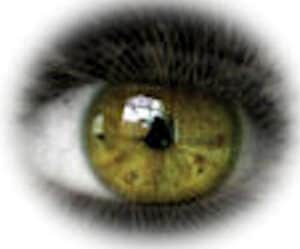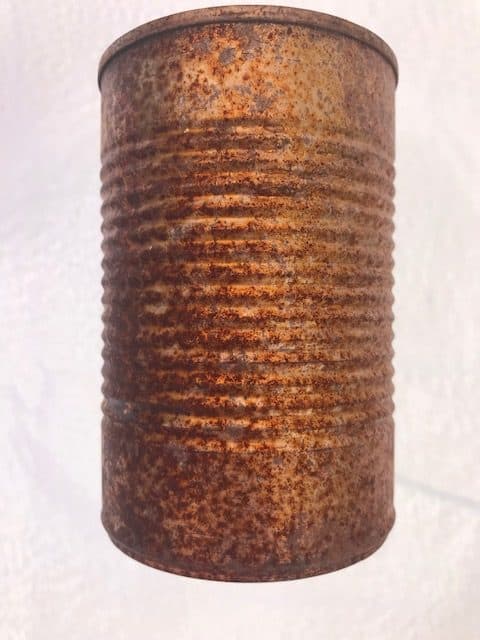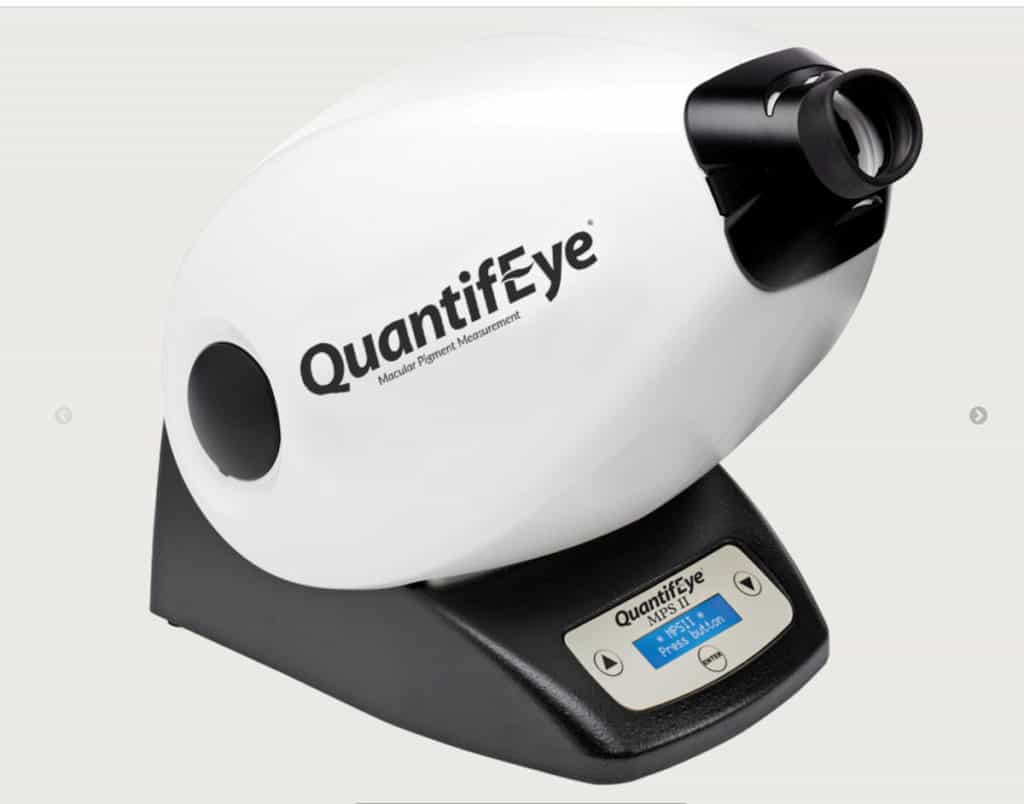Lutein, zeaxanthin, and meso-zeaxanthin stand as pivotal carotenoids, indispensable for nurturing optimal eye and brain function throughout all stages of life.
These three compounds, renowned for their exceptional properties, play crucial roles in supporting visual acuity, cognitive health, and overall well-being.
What are lutein, zeaxanthin, and meso-zeaxanthin?
These three micro-nutrients are in a class of nutrients called the carotenoids. The carotenoids are pigments that give fruits and vegetables their color. They are antioxidants, that is, they act against oxidation. We call oxidation outside of the human body ‘rusting.’
Oxidative stress kills cells. If the body is deficient in antioxidants it cannot keep up with the oxidative ‘rusting’ process. The oxidative stress turns on the immune system, which results in inflammation. Inflammation results in more oxidative stress. You can see the paradox here. The body responds to oxidative stress with more oxidative stress.
Within the eye, lutein, zeaxanthin, and meso-zeaxanthin are concentrated in the macula of the eye. The macula is the central vision area that is responsible for visual acuity. These carotenoids serve to protect vision by:
-Anti-oxidant activity, and
– absorption and filtering of harmful short-wavelength light rays.
But these carotenoids are also linked to improved visual performance.
The biological function of these nutrients extends beyond the retina by contributing to brain development and function.
What happens to the eye and brain under oxidative stress?
The performance of the body is not optimized. The speed of processing of the brain and retinal tissue slows down. These carotenoids affect the eye’s performance of:
– Visual acuity,
– contrast sensitivity,
– light and dark adaptation speed,
– color discrimination, and
– decreased glare disability.
The carotenoids in the brain are responsible for;
-Better global cognition,
– better verbal learning,
– better memory recall,
– better processing speed, and
– faster perceptual speed.
All of these performance and processing factors of the brain and retinal tissues of the eye are negatively impacted by oxidative stress.
Natural Sources of Lutein and zeaxanthin.
Colorful vegetables like:
Spinach,
broccoli,
leafy greens like spinach, kale. collards,
squash,
Brussels sprouts,
carrots,
peas,
avocados
asparagus.
Do we need to supplement or are dietary sources enough?
It has been shown that some of the grocery store produce has lower nutrient levels than produce grown in the past. This is thought to be due to intensive farming which has been done to meet modern demands for food. Exhaustive farming depletes the nutrients from farmland soil.
Another theory is t is that less nutritious food is the result of increased carbon dioxide. Although carbon dioxide is essential for plants, too much causes them to ” grow bigger and faster, consequently getting larger but less nutrient-packed.” Carbon dioxide also contributes to lowering mineral content in plants and may have a negative effect on insect pollinators. Increased carbon dioxide is another consequence of global warming. (Ref: Vanishing Nutrients, Scientific American .)
.)
It is known that crops are cultivated for higher yields, faster growth rates, better pest resistance, but not necessarily for nutritional value. Because of modern farming practices, the nutritional value of fruits and vegetables has decreased over the last 50 years. (Ref: Changes in USDA Food Composition Data for 43 garden Crops 1959 – 1999 )
Another reason to supplement depends on the individual. Prescription medication may interfere with either;
- The absorption of the nutrients,
- metabolism of nutrients,
- formation of other nutrients within the body, and/or
- depletion of nutrient storage. If unable to store essential nutrients, the body will cycle through periods of depletion, resulting in oxidative stress.
Finally, the more obvious reason for supplementing is the lack of a balanced nutritious diet. Multiple studies have indicated that the Western diet is low in the intake of the carotenoids, especially in the form of green leafy vegetables.
Why don’t most supplements include meso-zeaxanthin?
Meso-zeaxanthin has been the least studied of the three carotenoids found in the macula. Meso-zeaxanthin is not found in green leafy plants like lutein and zeaxanthin. But is found in egg yolks and some fish (trout, sardines, shrimp, and salmon skin.)
Commercially produced supplements of meso-zeaxanthin are extracted from the Aztec marigold flower.
One theory is that macular meso-zeaxanthin is derived from lutein in the macula.
It has also been discovered that commercially available lutein supplements may contain trace amounts of meso-zeaxanthin, although not indicated on the label. It is thought that the meso-zeaxanthin is converted during the extraction process.
It is controversial as to where the meso-zeaxanthin is derived. Either it is formed in the macula from lutein or it is in trace amounts in lutein supplements.
See this other article: Meso-Zeaxanthin: The Third Carotenoid for Macular Health
Can macular lutein, zeaxanthin, and meso-zeaxanthin be measured?
Macular Pigment Optical Density (MPOD) is a technique of measuring the concentration of these pigmented carotenoids in the macula area. It is a relatively easy test that can be done in the office.
Macular pigment density is measured using a specialized instrument that presents the patient with flickering lights. One wavelength of light (blue) is absorbed by the macular pigment, the other wavelength of light (green) is not absorbed by the macular pigment. (This technique is called heterochromatic flicker photometry.)
One eye is tested at a time. The person being tested is asked to click a button when they see the flicker. The computer then calculates the macular pigment density by the ratio of blue/green light detected by the participant.
This can indicate the level of protection for macular health and the risk for developing AMD.
Patients with lower levels of macular pigment density are exposed to more harmful blue light, increasing their risk of developing AMD. These patients are in greatest need of nutritional supplementation.
Macular pigment density is found to correlate with the levels found in brain tissue. The inference is that measured MPOD levels reflect those found in the brain. Researchers will use the measurement of MPOD as an indicator of lutein and zeaxanthin levels in the brain.
When should you start supplementing with lutein, zeaxanthin, and meso-zeaxanthin?
As early as possible.
The importance of lutein and zeaxanthin for retinal health has been studied for 30 years. These studies have proven the vital protective effect of these micro-nutrients on macular tissue.
The concentrating of lutein in the brain has been studied and found to positively correlate with cognitive function.
Studies have shown that even during pregnancy lutein, zeaxanthin, and meso-zeaxanthin accumulate in the developing brain and retina of the fetus. This is why prenatal diets are so important.
Studies have been done looking at children, young adults, and seniors supplementation with lutein, zeaxanthin, and meso-zeaxanthin.
A study published in 2018 reported the association of macular pigment levels and the academic performance of children. The study found that children with high MPOD had higher verbal comprehension, concepts formation, and visual matching. (Ref: (Macular pigment optical density is positively associated with academic performance among preadolescent children )
)
Another study that supplemented young adults with lutein, zeaxanthin, and meso-zeaxanthin, showed that their MPOD increased significantly along with decreased cortisol hormone (known as a ‘stress’ hormone) and decreased psychological stress. (Ref: Supplementation with macular carotenoids reduces psychological stress, serum cortisol, and sub-optimal symptoms of physical and emotional health in young adults )
)
Supplementation with lutein and zeaxanthin has been studied in athletes suggest the potential for increasing macular pigment to optimizes visual performance and cortical (brain) processing speed. (Ref: Influence of the dietary carotenoids lutein and zeaxanthin on visual performance: Application to baseball )
)
Studies on adults have shown that the higher concentration of macular pigment, formed by the accumulation of lutein and zeaxanthin, the lower the risk for developing macular degeneration.
Another study suggested that supplementing with lutein and zeaxanthin partially reversed vision loss due to macular degeneration. (Ref: Effect of lutein and zeaxanthin on macular pigment …).
…).
The AREDS2 is a study that looked at the impact that supplementing older adults, who are experiencing macular degeneration, with vitamins C and E, zinc, copper, lutein, and zeaxanthin. They found that this formula is for those with intermediate ARMD (meaning some signs of ARMD with or without vision loss) and advanced ARMD (significant vision loss in one eye.) The risk of progression to advanced ARMD was reduced by 25%.
Related article: How do the AREDS and AREDS2 Differ?
Related article: The 7 Truths about AMD
Learn more about blood vessel and retinal nerve health: Do Omega-3 Supplements Help Your Eyes?
An 18-month study looked at the effect of lutein, zeaxanthin, and meso-zeaxanthin supplementation (along with omega 3 fatty acids) on adults with Alzheimer’s disease. They were given 22 mg total L,Z,Mz, plus 1 gram fish oil. They concluded that the progression of Alzheimer’s disease was significantly less. Caregivers reported functional benefits in memory, sight, and mood. (Ref: Nutritional Intervention to Prevent Alzheimer’s Disease: Potential Benefits of Xanthophyll Carotenoids and Omega-3 Fatty Acids Combined )
In the End…
Studies have shown the benefits of these three micro-nutrients for eye and brain health throughout life. Numerous studies have correlated improved visual and brain performance and processing with MPOD levels. Get out in front by supplementing early with these essential and exceptional carotenoids.
Reviewing numerous studies the dosages were usually 10 to 12 mg lutein and 2 mg zeaxanthin per day. The studies evaluating children and young adults were usually 4 months. Studies evaluating older adults were longer, 6 to 12 months.
Changing your diet or supplementing with lutein and zeaxanthin can lead to meaningful changes in less than a year. The benefits will be gradual and most likely not detectable for at least 6 months. Building macular pigment depends on consistent supplementation.




